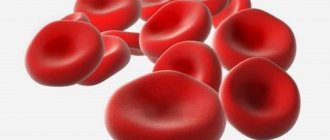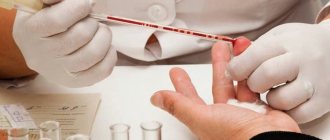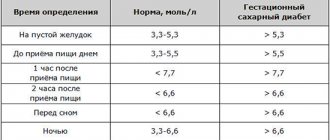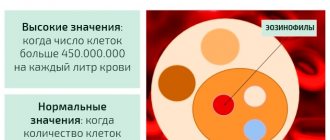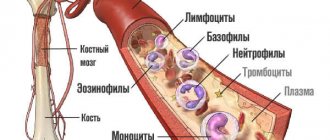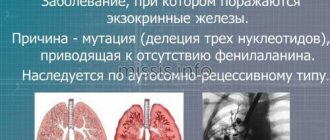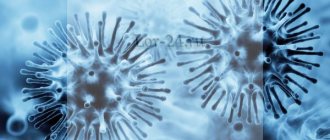Decoding an ECG is the job of a knowledgeable doctor. This method of functional diagnostics evaluates:
- heart rate - the state of the generators of electrical impulses and the state of the heart system conducting these impulses
- the condition of the heart muscle itself (myocardium), the presence or absence of its inflammation, damage, thickening, oxygen starvation, electrolyte imbalance
However, modern patients often have access to their medical documents, in particular, to electrocardiography films on which medical reports are written. With their diversity, these recordings can drive even the most balanced but ignorant person to panic disorder. After all, the patient often does not know for certain how dangerous to life and health is what is written on the back of the ECG film by the hand of a functional diagnostician, and there are still several days before an appointment with a therapist or cardiologist.
To reduce the intensity of passions, we immediately warn readers that with not a single serious diagnosis (myocardial infarction, acute rhythm disturbances), a functional diagnostician will not let a patient leave the office, but, at a minimum, will send him for a consultation with a fellow specialist right there. About the rest of the “open secrets” in this article. In all unclear cases of pathological changes in the ECG, ECG monitoring, 24-hour monitoring (Holter), ECHO cardioscopy (ultrasound of the heart) and stress tests (treadmill, bicycle ergometry) are prescribed.
Basic Rules
When studying the results of a patient’s examination, doctors pay attention to such components of the ECG as:
- Teeth;
- Intervals;
- Segments.
Not only their presence or absence is assessed, but also their height, duration, location, direction and sequence.
There are strict normal parameters for each line on the ECG tape, the slightest deviation from which may indicate disturbances in the functioning of the heart.
What is an abnormal ECG
An abnormal electrocardiogram is a deviation of the test results from the norm. The doctor’s job in this case is to determine the level of danger of anomalies in the transcript of the study.
Abnormal ECG results may indicate the following problems:
- the shape and size of the heart or one of its walls are noticeably changed;
- imbalance of electrolytes (calcium, potassium, magnesium);
- ischemia;
- heart attack;
- change in normal rhythm;
- side effect from medications taken.
Cardiogram analysis
The entire set of ECG lines is examined and measured mathematically, after which the doctor can determine some parameters of the work of the heart muscle and its conduction system: heart rhythm, heart rate, pacemaker, conductivity, electrical axis of the heart.
Today, all these indicators are studied by high-precision electrocardiographs.
Sinus rhythm of the heart
This is a parameter that reflects the rhythm of heart contractions that occur under the influence of the sinus node (normal).
It shows the coherence of the work of all parts of the heart, the sequence of processes of tension and relaxation of the heart muscle. The rhythm is very easy to determine by the highest R waves : if the distance between them is the same throughout the entire recording or deviates by no more than 10%, then the patient does not suffer from arrhythmia.
Heart rate
The number of beats per minute can be determined not only by counting the pulse, but also by ECG. To do this, you need to know the speed at which the ECG was recorded (usually 25, 50 or 100 mm/s), as well as the distance between the highest teeth (from one vertex to another).
By multiplying the recording duration of one mm by the length of the segment RR , you can get the heart rate. Normally, its indicators range from 60 to 80 beats per minute.
Excitation source
The autonomic nervous system of the heart is designed in such a way that the contraction process depends on the accumulation of nerve cells in one of the zones of the heart. Normally, this is the sinus node, impulses from which disperse throughout the nervous system of the heart.
In some cases, the role of pacemaker can be taken over by other nodes (atrial, ventricular, atrioventricular). This can be determined by examining the P wave - inconspicuous, located just above the isoline.
What is postmyocardial cardiosclerosis and why is it dangerous? Is it possible to cure it quickly and effectively? Are you at risk? Find out everything!
The causes of the development of cardiac cardiosclerosis and the main risk factors are discussed in detail in our next article.
You can read detailed and comprehensive information about the symptoms of cardiac cardiosclerosis here.
Conductivity
This is a criterion showing the process of impulse transmission. Normally, impulses are transmitted sequentially from one pacemaker to another, without changing the order.
Electric axis
An indicator based on the process of ventricular excitation. Mathematical analysis of the Q, R, S waves in leads I and III allows us to calculate a certain resulting vector of their excitation. This is necessary to establish the functioning of the branches of the His bundle.
The resulting angle of inclination of the heart axis is estimated by its value: 50-70° normal, 70-90° deviation to the right, 50-0° deviation to the left.
In cases where there is a tilt of more than 90° or more than -30°, there is a serious disruption of the His bundle.
Teeth, segments and intervals
Waves are sections of the ECG lying above the isoline, their meaning is as follows:
- P – reflects the processes of contraction and relaxation of the atria.
- Q, S – reflect the processes of excitation of the interventricular septum.
- R – process of ventricular excitation.
- T – process of relaxation of the ventricles.
Intervals are ECG sections lying on the isoline.
- PQ – reflects the propagation time of the impulse from the atria to the ventricles.
Segments are sections of an ECG, including an interval and a wave.
- QRST – duration of ventricular contraction.
- ST – time of complete excitation of the ventricles.
- TP – time of electrical diastole of the heart.
Decryption features
To record a cardiogram, special sensors are attached to a person’s body, which transmit electrical impulses to an electrocardiograph. In medical practice, these impulses and the paths they take are called leads. Basically, 6 main leads are used during the study. They are designated by the letters V from 1 to 6.
The following rules for deciphering a cardiogram can be distinguished:
- In lead I, II or III, you need to determine the location of the highest region of the R wave, and then measure the gap between the next two waves. This number should be divided by two. This will help determine the regularity of your heart rate. If the gap between the R waves is the same, this indicates normal contraction of the heart.
- After this, you need to measure each tooth and interval. Their standards are described in the article above.
Most modern devices automatically measure your heart rate. When using older models, this has to be done manually. It is important to consider that the ECG recording speed is usually 25 – 50 mm/s.
Heart rate is calculated using a special formula. At an ECG recording speed of 25 mm per second, it is necessary to multiply the R - R interval distance by 0.04. In this case, the interval is indicated in millimeters.
At a speed of 50 mm per second, the R - R interval must be multiplied by 0.02.
For ECG analysis, 6 of 12 leads are usually used, since the next 6 duplicate the previous ones.
Dangerous diagnoses
What dangerous conditions can be determined by ECG readings during interpretation?
Extrasystole
This phenomenon is characterized by an abnormal heart rhythm . The person feels a temporary increase in contraction frequency followed by a pause. It is associated with the activation of other pacemakers, which, along with the sinus node, send an additional volley of impulses, which leads to an extraordinary contraction.
If extrasystoles appear no more than 5 times per hour, then they cannot cause significant harm to health.
Arrhythmia
Characterized by a change in the periodicity of sinus rhythm , when impulses arrive at different frequencies. Only 30% of such arrhythmias require treatment, because can provoke more serious diseases.
In other cases, this may be a manifestation of physical activity, changes in hormonal levels, the result of a previous fever and does not threaten health.
Bradycardia
It occurs when the sinus node is weakened, unable to generate impulses with the proper frequency, as a result of which the heart rate slows down, down to 30-45 beats per minute .
Bradycardia can also be a manifestation of normal heart function if the ECG is recorded during sleep.
Tachycardia
The opposite phenomenon, characterized by an increase in heart rate of more than 90 beats per minute. In some cases, temporary tachycardia occurs under the influence of severe physical exertion and emotional stress, as well as during illnesses associated with increased temperature.
Conduction disturbance
In addition to the sinus node, there are other underlying pacemakers of the second and third orders. Normally, they conduct impulses from the first-order pacemaker. But if their functions weaken, a person may feel weakness, dizziness caused by depression of the heart.
It is also possible to lower blood pressure, because... the ventricles will contract less frequently or arrhythmically.
Many factors can lead to disruptions in the functioning of the heart muscle itself. Tumors develop, muscle nutrition is disrupted, and depolarization processes are disrupted. Most of these pathologies require serious treatment.
Changes in myocardial contractility and nutrition
Early ventricular repolarization syndrome
Most often, this is a variant of the norm, especially for athletes and people with congenital high body weight. Sometimes associated with myocardial hypertrophy. Refers to the peculiarities of the passage of electrolytes (potassium) through the membranes of cardiocytes and the characteristics of the proteins from which the membranes are built. It is considered a risk factor for sudden cardiac arrest, but does not provide clinical results and most often remains without consequences.
Moderate or severe diffuse changes in the myocardium
This is evidence of a malnutrition of the myocardium as a result of dystrophy, inflammation (myocarditis) or cardiosclerosis. Also, reversible diffuse changes accompany disturbances in water and electrolyte balance (with vomiting or diarrhea), taking medications (diuretics), and heavy physical activity.
Nonspecific ST changes
This is a sign of deterioration in myocardial nutrition without severe oxygen starvation, for example, in case of disturbances in the balance of electrolytes or against the background of dyshormonal conditions.
Acute ischemia, ischemic changes, T wave changes, ST depression, low T
This describes reversible changes associated with oxygen starvation of the myocardium (ischemia). This can be either stable angina or unstable, acute coronary syndrome. In addition to the presence of the changes themselves, their location is also described (for example, subendocardial ischemia). A distinctive feature of such changes is their reversibility. In any case, such changes require comparison of this ECG with old films, and if a heart attack is suspected, troponin rapid tests for myocardial damage or coronary angiography. Depending on the type of coronary heart disease, anti-ischemic treatment is selected.
Why there might be differences in performance
In some cases, when re-analyzing the ECG, deviations from previously obtained results are revealed. With what it can be connected?
- Different times of the day . Typically, an ECG is recommended to be done in the morning or afternoon, when the body has not yet been exposed to stress factors.
- Loads . It is very important that the patient is calm when recording an ECG. The release of hormones can increase heart rate and distort indicators. In addition, it is also not recommended to engage in heavy physical labor before the examination.
- Eating . Digestive processes affect blood circulation, and alcohol, tobacco and caffeine can affect heart rate and blood pressure.
- Electrodes . Incorrect application or accidental displacement can seriously change the indicators. Therefore, it is important not to move during recording and to degrease the skin in the area where the electrodes are applied (the use of creams and other skin products before the examination is highly undesirable).
- Background . Sometimes extraneous devices can affect the operation of the electrocardiograph.
Find out everything about recovery after a heart attack - how to live, what to eat and what to treat to support your heart?
Is there a disability category after a heart attack and what can you expect in terms of work? We'll tell you in our review.
Rare but accurate myocardial infarction of the posterior wall of the left ventricle - what is it and why is it dangerous?
Execution technique
Carrying out cardiography does not require particularly complex skills, so middle and junior medical personnel know how to make a heart cardiogram. A device for such manipulation is a cardiograph. It can be stationary and permanently located in a specially equipped room, which each clinic has, or mobile - for convenient ECG recording at the patient’s bedside.
When performing an ECG, the patient lies on his back. The points where the electrodes are applied are freed from clothing and moistened with an isotonic sodium chloride solution to improve conductivity. Electrodes in the form of plates are attached to the limbs: red - on the right hand, yellow - on the left, green - on the left leg and black on the right. Six electrodes in the form of suction cups are installed on the chest. They are called chest leads (V1-V6), and electrodes from the limbs are considered basic (I, II, III) and amplified (aVL, aVR, aVF). Each of the leads is responsible for a specific area in the heart. If pathological processes along the posterior wall of the heart muscle are suspected, additional chest leads (V7-V9) are used.
It is important that before a scheduled electrocardiogram the patient does not drink alcohol or coffee. When removing it, it is undesirable to move or talk, as this leads to distortion of the examination results.
The cardiogram is recorded as a graph on special paper or in electronic form. It is important to record at least four cardiac cycles to obtain objective data on the condition of the heart. The film is signed indicating the full name, gender (male, female), date of the study, and age of the patient, since an adult and a child have different values of normal parameters. After this, the recording is transferred to the doctor, who interprets the ECG in detail.
Additional examination techniques
Holter
A method of long-term study of heart function , possible thanks to a portable compact tape recorder that is capable of recording the results on magnetic film. The method is especially good when it is necessary to study periodically occurring pathologies, their frequency and time of occurrence.
Treadmill
Unlike a conventional ECG, which is recorded at rest, this method is based on the analysis of results after physical activity . Most often, this is used to assess the risk of possible pathologies not detected on a standard ECG, as well as when prescribing a course of rehabilitation for patients who have suffered a heart attack.
Phonocardiography
Allows you to analyze heart sounds and murmurs. Their duration, frequency and time of occurrence correlate with the phases of cardiac activity, which makes it possible to assess the functioning of the valves and the risks of developing endo- and rheumatic carditis.
A standard ECG is a graphical representation of the work of all parts of the heart. Many factors can affect its accuracy, so you should follow your doctor's recommendations .
The examination reveals most pathologies of the cardiovascular system, but additional tests may be required for an accurate diagnosis.
Finally, we suggest watching a video course on decoding “An ECG can be done by everyone”:
The meaning of cells (cells)
There are two types of cells on the paper for printing the examination result: large and small. All of them consist of vertical and horizontal guides. The vertical ones are voltage, and the horizontal ones are time.
Large squares consist of 25 small cells. Each small cell is equal to 1 mm and corresponds to 0.04 seconds in the horizontal direction. Large squares equal 5 mm and 0.2 seconds. In the vertical direction, a centimeter of strip is equal to 1 mV of voltage.
P wave
All waves of the electrocardiogram have a certain significance for making the correct diagnosis.
The very first tooth of the graph is called P. It indicates the time between heartbeats. To measure it, it is best to mark the beginning and end of the tooth with vertical lines, and then count the number of small cells. Normally, the P wave should be between 0.12 and two seconds.
However, measuring this indicator in only one area will not give accurate results. To make sure that the heartbeat is even, it is necessary to determine the P wave interval in all parts of the electrocardiogram.
Cardiac conduction
The ECG determines cardiac conduction. The P wave determines the atrial impulse; normally this indicator should be 0.1 s. The P-QRS interval reflects the overall conduction velocity through the atria. The norm of this indicator should be within 0.12 to 0.2 s.
The QRS segment shows conduction through the ventricles; the normal range is 0.08 to 0.09 s. As the intervals increase, cardiac conduction slows down.
Patients do not need to know what the ECG shows. A specialist should understand this. Only a doctor can correctly decipher the cardiogram and make the correct diagnosis, taking into account the degree of deformation of each individual tooth or segment.
It is not always possible to read the result of an electrocardiogram on your own due to lack of experience and unclear teeth, segments, intervals, as well as the characteristics of the paper.
What is the difference between a syndrome and a phenomenon?
Many patients, having seen the concepts of the phenomenon or CLC syndrome in the ECG conclusion, may be puzzled which of these diagnoses is worse. The CLC phenomenon, subject to a correct lifestyle and regular monitoring by a cardiologist, does not pose a great danger to health, since the phenomenon is the presence of signs of PQ shortening on the cardiogram, but without clinical manifestations of paroxysmal tachycardia.
CLC syndrome, in turn, is an ECG criterion accompanied by paroxysmal tachycardias, most often supraventricular, and can cause sudden cardiac death (in relatively rare cases). Typically, patients with short PQ syndrome develop supraventricular tachycardia, which can be quite successfully stopped at the stage of emergency medical care.
Forecast
Determining the prognosis for patients with CLC syndrome is always difficult, since it is not possible to predict in advance the occurrence of certain rhythm disturbances, the frequency and conditions of their occurrence, as well as the occurrence of their complications.
According to statistics, the life expectancy of patients with short PQ syndrome is quite high, and paroxysmal rhythm disturbances most often occur in the form of supraventricular rather than ventricular tachycardias. However, in patients with underlying cardiac pathology, the risk of sudden cardiac death remains quite high.
The prognosis for the phenomenon of shortened PQ remains favorable, and the quality and life expectancy of such patients do not suffer.
PQ tooth spacing
PQ is the interval from the P wave to the Q wave. It corresponds to the time of excitation through the atria to the ventricular myocardium. The normal PQ interval varies at different ages. Usually it is 0.12-0.2 s.
With age, the interval increases. Thus, in children under 15 years of age, PQ can reach 0.16 s. Between the ages of 15 and 18 years, PQ increases to 0.18 s. In adults, this figure is equal to a fifth of a second (0.2).
When the interval lengthens to 0.22 s, they speak of bradycardia.
Holter method
How can you learn to read an ECG if it is not always clear which waves are located and how they are located? In such cases, continuous recording of the cardiogram using a mobile device is prescribed. It continuously records ECG data on a special tape.
This examination method is necessary in cases where classical ECG fails to detect pathologies. During a Holter diagnosis, a detailed diary is necessarily kept, where the patient records all his actions: sleep, walks, sensations during activities, all activities, rest, symptoms of the disease.
Typically, data recording occurs within 24 hours. However, there are times when it is necessary to take readings for up to three days.
